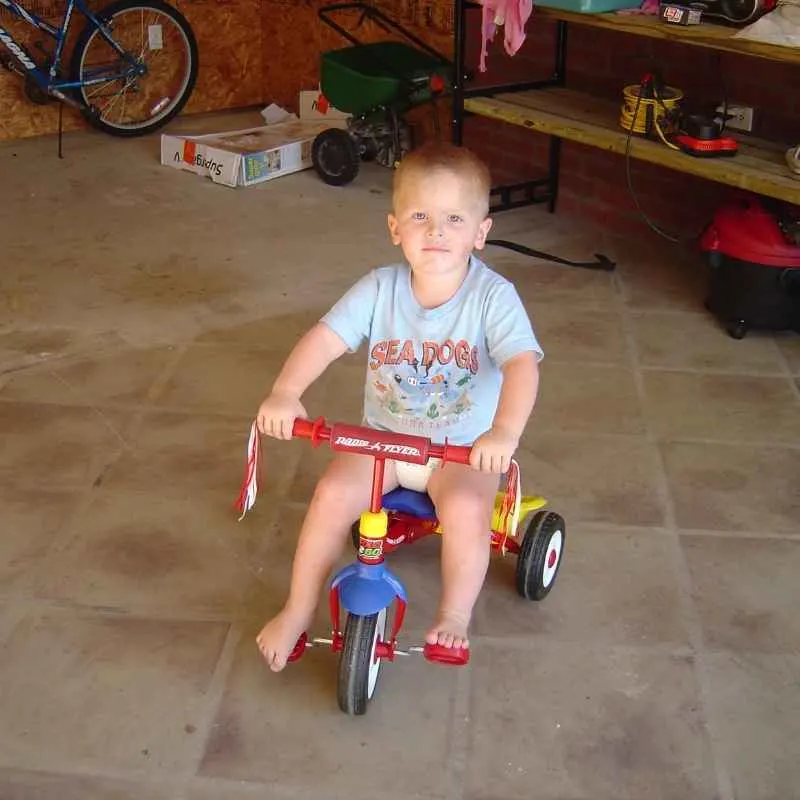- Clay Moon Phase Wall Hanging - July 4, 2023
- What To Do When a Toddler Won’t Keep Their Blanket On - June 10, 2023
- How Do Child Locks Work in Cars? (And When To Use Them!) - June 10, 2023
A toddler’s playtime does not necessarily have to involve a parent or a peer — independent playtime can be fun for a two-year-old, too. Free play benefits a child’s emotional development, but how much free play should a two-year-old have before it becomes too much?
Children who are allowed free play develop critical skills that allow them to be more successful as they age.
Below, I’ll tell you how you can encourage a young child to start playing independently. I’ll also explain how play impacts a child’s developmental well-being and what happens if a kid doesn’t get enough free play.

The Differences Between Free and Structured Play
According to the American Academy of Pediatrics (AAP), children need to have daily play opportunities (source). This should be a combination of free and structured play, and knowing the difference between structured and unstructured play can help you manage your child’s time better at home.
I’ll discuss the differences between free and unstructured play in more detail below:
Free Play
Free play is also known as independent play, self-directed play, or unstructured play. It allows your child to play independently and decide what they want to do. There are no guidelines for the child — they are free to play however they want. For safety reasons, an adult needs to be nearby just in case the child hurts themselves.
For the “terrible twos,” free play feeds their increasing desire to be independent as they grow out of their baby phase (source). As part of their curious nature, they will start to expand their learning, thinking, and socio-emotional capacities through free play.
Structured Play
Structured play is also called guided play and refers to play sessions with specific rules or objectives planned for a child’s play. Adults will usually be involved in these playtimes to guide and play with the toddler.
Here are a few examples of structured play for two-year-olds:
- Basic obstacle courses
- Large building blocks
- Large jigsaw puzzles
- Ball pits
- Dressing up
- Playdough
Strategies for Introducing Free Play to a Toddler
Playing is generally a voluntary activity for children. However, there are times when kids need a push in the right direction. Here are some ideas for encouraging your two-year-old to start independent play:
- Buy age-appropriate toys for them (e.g., dollhouses, wooden blocks).
- Create a spacious play area for them. Toddlers are energetic and love running around.
- Offer toys that promote a child’s intellectual and fine-motor skills (e.g., puzzles).
- Encourage imaginative play (i.e., pretend).
- Take them outside to play, such as at the playground or park.
- Provide art or craft supplies and see what your toddler can create.
- Establish a routine so the child can expect to have time to themselves.
How Do Toddlers Learn Through Play?
Play is important for a child’s learning and development. Play helps decrease stress levels and encourages a child to learn about the world around them. Through play, kids explore their abilities and discover themselves.
Play helps a toddler develop socially, emotionally, and cognitively. By playing alone and with others, children learn how to problem-solve, think creatively, gain confidence, and to empathize with their peers.
The United Nations International Children’s Emergency Fund (UNICEF) considers learning through play, or “playful learning,” to be crucial in early childhood education. Research has shown that play during the early years builds strong cognitive and emotional foundations for the child that will last well into adulthood (source).
When a child plays, whether structured or unstructured, they are constantly learning and developing life skills. These are the skills that a child stands to gain during playtime:
- Problem-solving
- Creativity
- Logical and analytical reasoning
- Learning from trial-and-error
- Decision-making
- Emotional self-regulation
- Empathy
- Self-confidence
- Desire to learn
The Benefits of Free Play
While parents love to spend time with their little ones, having the child learn to play on their own is also important. Unstructured and unregulated playtime is great for a child to discover their surroundings and to stimulate them intellectually.
Free play is beneficial for a toddler because it can:
- Encourage the child to be themselves.
- Build curiosity.
- Help a child feel happy and safe.
- Improve physical abilities.
- Promote the creative process.
- Encourage the child to learn about how things work.
- Practice solving problems on their own.
- Develop a sense of confidence in their own abilities.
- Promote independence and resilience.
The Disadvantages of Not Enough Free Play
Restricting your child’s free play can be detrimental to their personal growth. The common reasons a child is not getting enough free play can be:
- Parents fear for their children’s safety.
- There is no safe space for the child to explore on their own.
- Increased screen time.
- Too many other extracurricular activities (e.g., swimming, drawing, singing lessons).
The World Health Organization (WHO) warns that kids today are at risk of leading increasingly sedentary lifestyles, which impedes their playtime and can be harmful to their development in the long run (source).
Not having enough free play can result in a child:
- Developing depression later in life.
- Find it difficult to adapt to change.
- Having poor self-control.
- Increased risk of developing addictions.
- Being less physically active.
Final Words
A two-year-old has his or her own personality, and some toddlers will enjoy more free play than structured play and vice versa.
Be flexible and provide plenty of opportunities for both. There are no concrete rules.
Your child will lead the way, and you will get to know their likes and dislikes; you can feed their creative interests as you watch your little one flourish.
Author Notes:
Teresa is a Registered Nurse in the State of Texas and the mother of two. Opinions and insights on childcare are based on professional knowledge, academic research, and personal experience.
Recommended Reading:
- Can a Toddler Go to Daycare With an Ear Infection?
- Why Does Your Toddler Keep Undressing at Night?
- 5 Best Toddler Ride-On Cars With Parental Remote Control
Make Your Own Beautiful Living Succulent Wreath Centerpiece! Complete video course by Jeannine Romero now available through Skillshare.
